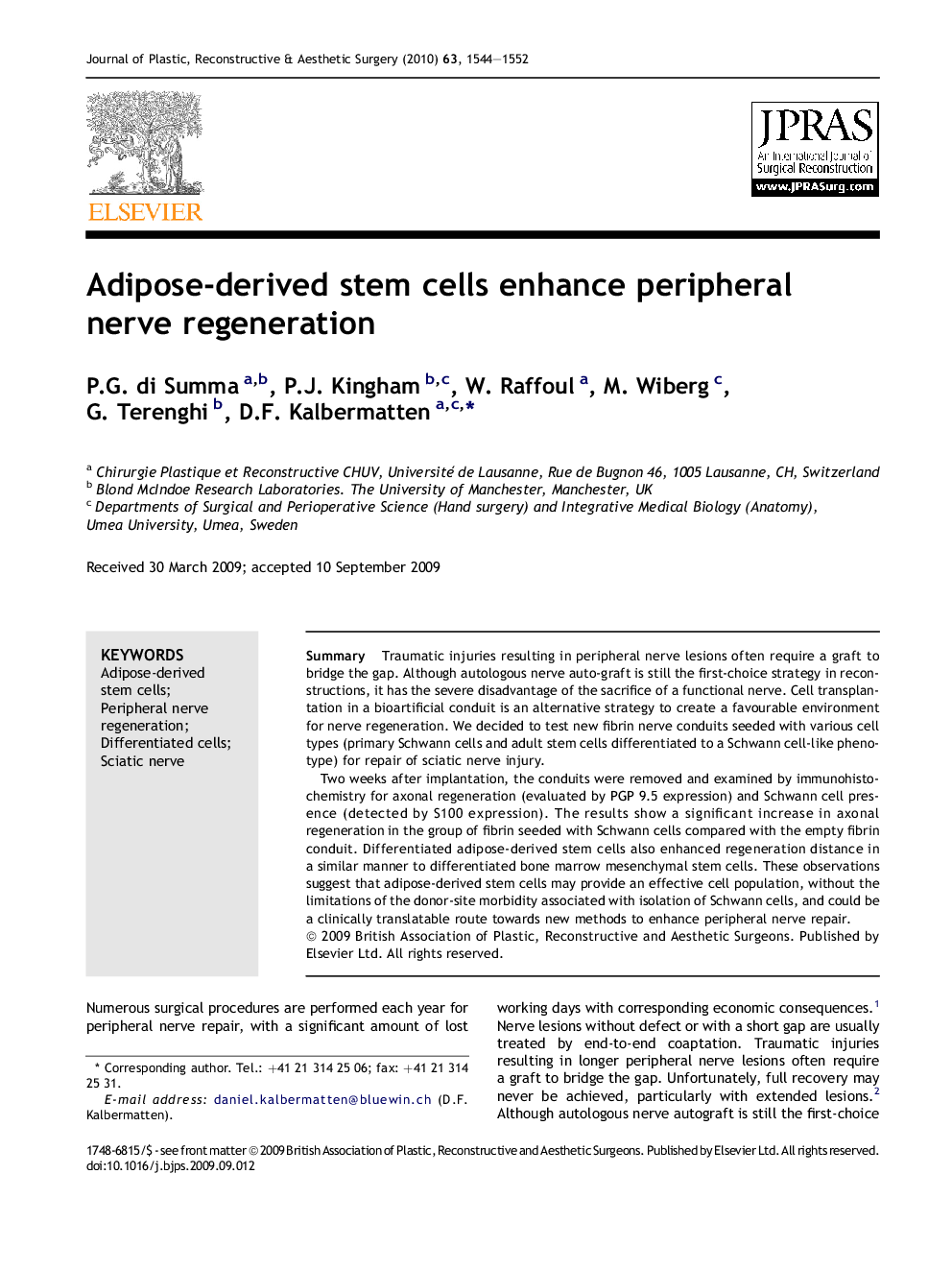| Article ID | Journal | Published Year | Pages | File Type |
|---|---|---|---|---|
| 4119587 | Journal of Plastic, Reconstructive & Aesthetic Surgery | 2010 | 9 Pages |
SummaryTraumatic injuries resulting in peripheral nerve lesions often require a graft to bridge the gap. Although autologous nerve auto-graft is still the first-choice strategy in reconstructions, it has the severe disadvantage of the sacrifice of a functional nerve. Cell transplantation in a bioartificial conduit is an alternative strategy to create a favourable environment for nerve regeneration. We decided to test new fibrin nerve conduits seeded with various cell types (primary Schwann cells and adult stem cells differentiated to a Schwann cell-like phenotype) for repair of sciatic nerve injury.Two weeks after implantation, the conduits were removed and examined by immunohistochemistry for axonal regeneration (evaluated by PGP 9.5 expression) and Schwann cell presence (detected by S100 expression). The results show a significant increase in axonal regeneration in the group of fibrin seeded with Schwann cells compared with the empty fibrin conduit. Differentiated adipose-derived stem cells also enhanced regeneration distance in a similar manner to differentiated bone marrow mesenchymal stem cells. These observations suggest that adipose-derived stem cells may provide an effective cell population, without the limitations of the donor-site morbidity associated with isolation of Schwann cells, and could be a clinically translatable route towards new methods to enhance peripheral nerve repair.
